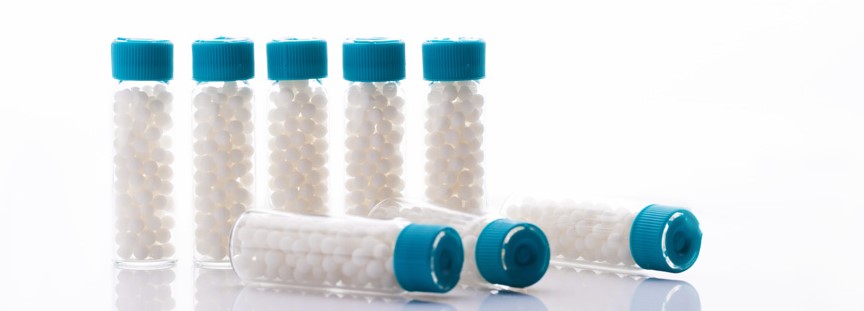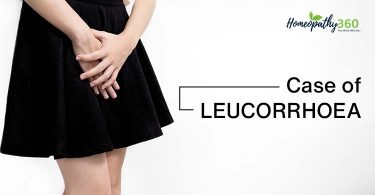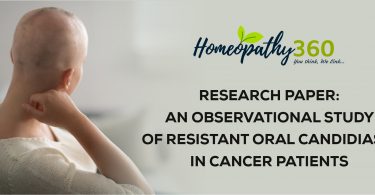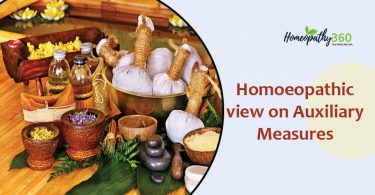
Dr Ruchi Mehta PhD (Hom)
Assit Prof Dept Of Obs & Gyn Homoeopathy University Saipura Jaipur
Dr Disha Shrivatava BHMS
Abstract:
As Polycystic Ovarian Syndrome (PCOS) / Polycystic Ovarian Disease (PCOD) is multifaceted problem with reproductive endocrine and metabolic dysfunction. PCOS is also called as Stein-leventhal Syndrome after two doctors who first described it in 1935. PCOS is one of the most endocrinopathy affecting women. The Rotterdam 2003 criteria defines PCOS as incidence of any two of 3 key criteria namely, oligo ovulation and anovulation , hyperandrogenism and polycystic ovaries [PCO]. PCOS is found to be the most common reason for menstrual irregularities in 4-12% of women of reproductive age [12-45 yrs old]. 5-10% of women develop PCOS during their teenage or child bearing years.
Worldwide PCOS affects up to 6-7% of the population. However, the prevalence specific to the country vary extensively. In India, the incidence of PCOS/PCOD is on the hike; nearly 35% of women suffer from it. Symptoms of PCOS/PCOD are irregular, infrequent periods within 3 or 4 years of starting menstruate light or very heavy bleeding during period weight gain, excessive hair growth to varying degrees on face, chest, and lower abdomen. In this review paper the treatment of PCOS with different medicinal system namely Ayurveda, Homeopathy and Allopathy taken into account to compare and analyse best curable medicinal system for PCOS. Allopathy does not cure PCOS, but helps in managing and controlling effects while Ayurveda and Homeopathy can be considered as best cure and promising treatment with no side effects.
Keywords: PCOS/PCOD, polycystic ovaries, syndrome, follicles, cysts, menses, GnRH, homeopathy, diabetes mellitus, anovulation, hormone.
Introduction
Polycystic Ovarian Syndrome also known as PCOS OR PCOD [Polycystic Ovarian Disorder] is a very common hormonal disorder and a leading cause of female infertility worldwide. PCOS is also called as Stein-leventhal Syndrome after two doctors who first described it in 1935 PCOS is one of the most endocrinopathy affecting women. The Rotterdam 2003 criteria defines PCOS as incidence of any two of 3 key criteria namely, oligoovulation andan ovulation, hyperandrogenism and polycystic ovaries [PCO]. Poly cystic Ovarian Syndrome (PCOS) is a condition in which women typically have many number of small cysts around the edge of their ovaries. Polycystic ovaries mean the ovaries containing a large number of cysts that are not bigger than 8mm and develop more follicles than normal every month. Polycystic ovary start maturing at least twice as many follicles compared normal most of which enlarge and mature but do not release an egg. The cysts are the egg containing follicles that do not develop properly because of hormone A imbalance. Some women go on to develop PCOS [Polycystic Ovarian Syndrome] which means they have other symptoms including polycystic ovaries. PCOS may be heredity as well. Studies shows that women with family history of polycystic ovaries are 50% more likely to develop PCOS.PCOS is found to be the most common reason for menstrual irregularities in 4-12% of women of reproductive age [12-45 yrs old]. 5-10% of women develop PCOS during their teenage or child bearing years.[6] Worldwide PCOS affects up to 6-7% of the population. However, the prevalence specific to the country vary extensively. In India, the incidence of PCOS/PCOD is on the hike; nearly 35% of women suffer from it. Symptoms like irregular, infrequent periods within 3 or 4years of starting menstruate lighter very heavy bleeding during period weight gain, excessive hair growth to varying degrees on face, chest, and lower abdomen. Moderate abdominal discomfort during periods, acne, and excessive skin growth on neck or in armpit also called as skin tags. Bone pain [arthralgia] and hair loss [alopecia], constipation, flauntulence, and indigestion. PCOS is also called as polycystic ovary disease [PCOD], Stein-Leventhal syndrome, ovarian hyperthecosis and sclerocystic ovary syndrome.
PATHOGENESIS
Complete understanding of pathogenesis of PCOS is still lacking due to heterogeity of this disorder. There are most likely multiple underlying pathophysiological mechanisms. Various theories have been proposed to explain the pathogenesis of PCOS/PCOD. They are as follows:
- An alteration in gonadotropin releasing hormone secretion results in increase of LH secretion. [lutenizing hormone]
- An alteration in insulin secretion; leads to hyperinsulinemia and insulin resistance.
- Defect in androgen synthesis that leads to increase in ovarian androgen production. LH (Leutinizing Hormone): LH hyper secretion is a main cause of infertility and miscarriage in women having PCOS/PCOD. Many theories have been introduced for the etiology of over secretion of LH by pituitary gland. These include hypothalamic dysfunction, reduced pituitary sensitivity to gonadotropin releasing hormone [GnRH] and increased pulsatality of GnRH. Increase in LH leads to increase in androgen production by theca cells within the ovary. Hyperandrogenism or Androgen excess: Hyperandrogenism is one of the primary symptoms of PCOS/PCOD. Increased or elevated level of circulating androgen is observed in 60-80% of women with PCOS.
Clinical features of hyperandrogenism in women with PCOS include acne, hirsutism, and androgenic alopecia [hair loss] Insulin may modulate Gonadotropin secretion Hypothalamus (Rapid GnRH pulse) Pituitary (elevated LH relative to FSH) Insulin resistance Compensatory Hyperinsulinemia Ovaries and Adrenal Glands Increased androgen production LH Promotes Androgen production Adrenal Responsiveness to ACTH is enhanced Insulin promotes androgen production Androgen may exacerbate insulin.
Hyperinsulinemia and Insulin resistance [IR]:
Hyperinsulinemia is a condition in which there is excess level of insulin circulating in the blood relative to the levels of glucose. Hyperinsulinemia can result from a various metabolic diseases and condition, one of which is PCOS/PCOD. Whereas insulin resistance is a pathological state or condition in which the ability of cells to respond to normal action of hormone insulin is diminished. Insulin resistance further leads to development of Type 2 diabetes mellitus. 30-40%of women affected with PCOS have impaired glucose tolerance and 10% of women to develop type 2 diabetes mellitus by the age of 40 yrs. Insulin acts collaboratively with LH to enhance androgen production in the ovarian theca cells. It also decreases hepatic synthesis and sex hormone binding globulin secretion, hormone which binds testosterone in circulation therefore increasing the amount of free testosterone which is biologically available. Women with PCOS/COD and hyperinsulinemia have free testosterone, but the total concentration of testosterone may be at the upper level of normal or modestly elevated.
Causes: The main cause of PCOS/PCOD is unknown both environmental and genetic factors are implicated. Causes of PCOS are as follows:
- Genetic susceptibility
- Raised levels of insulin
- Hormonal imbalance
- Contraceptive pills
- Strong stimulation in adrenal in childhood
- Obesity
- Hereditary factors
- Sedentary lifestyle
- Stress
- Diaetes
- Insulin resistance
- Hyperprolactinemia
- Cushing’s syndrome
- Congenital adrenal hyperplasia
Homeopathy:
PCOS/PCOD finds promising treatment with homeopathic mode of system. Homeopathic mode of treatment is very safe and free from any side effects. Homeopathic medicines include dynamically potentized or powerful dominant influential drugs form of pills, powder, liquids, which includes less medicinal substances and greater energy. Since it consist more energy it has more capability to penetrate the system at deeper levels. Homeopathic medicines work on correcting hormonal imbalance, regularizing ovulation, restoring menses normalcy. Some homeopaths or proponents of homeopathy also claim that it helps in dissolving or solubalizing the cysts to eliminate the hormone therapy and surgery that promise complete cure for condition. Homeopathy focuses on treating and curing the root cause of problem. Combination of homeopathic constitutional treatment with exercise just like 30minutes walk, aerobics, swimming etc is done. Homeopathic medicines like Apis, Pulsatilla, Sepia, Lachesis and Graphites are often used in treatment of PCOS/PCOD.
Sepia is a bestcure for PCOS while Pulsatilla is used for suppressed menses for long duration. Calcarea Carb used for prolonged and profuse period.
Natrum mar cure for PCOS with irregular or suppressed menstrual cycles.
Thuja Occidentalis is used in retarded menstrual flow. Thuja has innate ability to dissolve abnormal growth or accumulation in the body. It is also helpful in treatment of extreme hair growth on unusual parts in women due to hormonal imbalance.
Another treatment is Lycopodium [LYCO] is used for vomiting, indigestion, bloating, constipation, anxiety and insomnia.
Lacheisis used in PCOS for blood poisoning, circulation difficulties with menstruation, menopause, tonsillitis and uterine problems.
OOPHORINUM is also found to be useful in certain patients. Homeopathic treatments are free from side effects.
Discussion
As PCOS/PCOD is multifaceted problem with reproductive endocrine and metabolic dysfunction. PCOS is characterized by infertility, ovarian dysfunction, hyperandrogenism, insulin resistance and chronic anovulation while major metabolic consequences including obesity, type II diabetes and cardiovascular disease affecting 5-10 % of female population of developed countries. Symptoms like irregular, infrequent periods within 3 or 4 years of starting menstruate light or very heavy bleeding during period weight gain , excessive hair growth to varying degrees on face, chest, and lower abdomen. Moderate abdominal discomfort during periods, acne, and excessive skin growth on neck or in armpit also called as skin tags. Bone pain [arthralgia] and hair loss [alopecia], constipation, flauntulence, and indigestion.
1 Early,scanty, dark,clotted
Menses – Lilium tigrium, Agnus castus
2 Amenorrhea, Bladder inflammation
Senecio Aureus
3 Infertility
4 Heavy periods, painful uterus
During periods – Calcareacarbonica
5 Burninguterus
lachesis
6 Metrorrhagia
Nux vomica
7 Swollen breast before period and
Bloating feeling Pulsatilla
8 Neuralgic pain during
menses and irregular menses
Xantoxilum fraxineum
9 Ovarian inflammation or
Ovaritis and ovarian cysts
Apismellifia
10 Chronic
Pelvic disorder,
11 Burning vaginaldischarge,
Painful intercourse
Lycopodium
12 Menstrual colic, threatened abortions
Secale
13 Tumoursand polyps of uterus
Buforana
14 Bleeding
With uterine fibroids
Salix nigra 3X
15 Warts on
vulva and perineum
Thuja occidentali
16 Prolapsed
uterus,
enlargement of uterus
Fraxinusamericana
17 Malposition of uterus,
itchy vagina andvulva,
Helonias Dandelion,
Conclusion
PCOS is an increasing public health problem which is very common and leading cause of infertility in women. Polycystic ovarian syndrome or PCOS is a condition in which a women’s level of sex hormone like estrogen and progesterone are imbalanced. Symptoms like irregular, infrequent periods within 3 or 4 years of starting menstruate light or very heavy bleeding during period weight gain, excessive hair growth to varying degrees on face, chest, and lower abdomen. Moderate abdominal discomfort during periods, acne, and excessive skin growth on neck or in armpit also called as skin diabetes
18 Hysteria, sobbing and grief
Ignatia amara, Nat mur, Aurum, Cocculus, Phosphoric acid
19 Uterine displacement Lappa
20 Metrititis- phosphorous
21 Heamorrhages,bruised feeling, uterine cramps- Thlaspi bursa, Pastoris
22 Hypertrophied uterus- Ustilagomaydis
Bone pain [arthralgia], hair loss
[alopecia], constipation, flauntulence, and indigestion.
Homeopathy can be considered as best cure and promising treatment with no side effects
References
- Stein IF, Leventhal ML. Amenorrhea associated with bilateral polycystic ovaries. AMJ
Obstet Gynecol. 1935; 29:181-191.
- Azziz R, woods ks, Reyna R, key TJ, Knochenhauer E S, Yildiz B O. The prevalence
and featuresof the polycystic ovary syndrome in an unselected population J. Clin.
Endocrinal,Metab 2004;89(6).2745-2749.
- Rotterdam ESHRE/ASRM- Sponsored PCOS Consensus Workshop Group.Revised
2003 consensus on diagnostic criteria and long term health risks related to polcystic
ovary syndrome.Fertil,Steril.2004;81:19-25.
- Knochenhauer ES, Key TJ ,Kahser- Miller M , Waggoner W ,Boots LR, Azziz R.
Prevalence of Polycystic Ovarian Syndrome in unselected black and white women of
the Southeastern United States: a prospective study. J ClinEndocrinolMetab
1998;83:3078-3082.
- Farah L, Lazeby AJ, Boots LR, Azziz R. Prevalence of Polycystic Ovarian Syndrome
in women seeking treatment from community electrologists. Albama Professional
Electrology Association Study Group .J Reprod Med 1999;44:870-874.
- Lindholm A, Andersson L, Eliasson M , Bixo M , Sundstrom-Poromaa I. Prevalence of
Symptoms associated with polycystic ovarian syndrome. Int J Gynaecol Obstet.2008
July; 102(1):39-43.
- Miller LG, Murray WJ. Herbal medicinals: a clinician’s guide. Routledge;1998.p.326.
- Ehrmann DA. Medical progress: Polycystic ovary syndrome. J Engl J Med
2005;352:1223-1236.
- Tsilchorozidou T, Overton C, Conway G S. The pathophysiology of polycystic ovary





